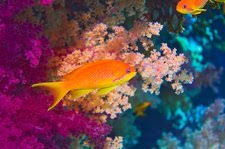Dragons in the Folktales of Southwest China: Symbolism and Cultural Significance

Southwest China, known for its rich diversity in culture, language, and natural landscapes, has a long history of fascinating folklore and legends that reflect the unique traditions of its ethnic communities. One of the most pervasive and enchanting motifs in these folktales is the dragon. Unlike the malevolent creatures often depicted in Western mythology, dragons in Chinese culture, especially in the Southwest region, hold profound symbolic value, representing power, protection, and good fortune. This article delves into the role of dragons in the folktales of Southwest China, exploring their symbolism, cultural significance, and the many diverse stories that have shaped the identity of the region.
The Role of Dragons in Chinese Folklore
In Chinese culture, dragons (龙, long) are considered auspicious beings that control natural elements, particularly water. They are believed to possess great wisdom and strength, often depicted as benevolent guardians of the people and nature. Unlike their Western counterparts, which are commonly seen as fearsome creatures, dragons in Chinese mythology are associated with prosperity, longevity, and harmony with the natural world.
Southwest China, home to a diverse array of ethnic groups, including the Yi, Miao, and Bai, has a rich tradition of folk tales featuring dragons. These tales are infused with the region’s historical, religious, and cultural context, making dragons not only central to the stories but also symbolic of the harmonious relationship between humans and nature.
The Southwestern Chinese Dragons and Their Unique Characteristics
Dragons in Southwest China differ somewhat from the more widely known mythological dragons of other regions. The dragons in this area are often tied to the land, rivers, mountains, and forests—embodying the sacred forces of nature. They represent the local belief that natural and spiritual worlds are interconnected, and they frequently interact with humans to teach lessons, provide guidance, or grant protection.
In the diverse landscape of Southwest China, dragons are frequently associated with the region’s rivers and lakes, seen as the beings who control the water and bring fertility to the land. They are also revered as protectors of agricultural fields and are considered to have the power to influence the weather, ensuring good harvests and the well-being of the people.
Famous Folktales of Dragons in Southwest China
Several folktales from Southwest China involve dragons in pivotal roles. Below are some examples of these stories, each revealing how the dragon is woven into the fabric of the region’s culture.
1. The Dragon King and the Flood
One of the most common themes found in Southwest Chinese dragon tales is the association between dragons and water. The story of the Dragon King, often associated with the Yangtze River or the Mekong River, speaks of the ancient belief that dragons govern the flow of rivers and regulate the water cycle. In many versions of the tale, the Dragon King is portrayed as a powerful figure who commands the rains and helps people by providing them with water during times of drought.
However, in some versions of the story, the Dragon King’s anger can also bring forth floods. This element of the story teaches the people of Southwest China about the dual nature of nature itself—benevolent when honored but destructive when provoked. As a protector and a force of nature, the Dragon King reminds communities of their responsibility to live in harmony with the land and the waters that sustain them.
2. The Dragon and the Peasant Girl
This story, particularly popular in the Bai and Miao communities, revolves around the love between a humble peasant girl and a dragon who transforms into a handsome young man. The peasant girl is often depicted as a symbol of purity, kindness, and humility, while the dragon represents power and wisdom. The tale’s central theme revolves around the trials and tribulations of their love, which often involves overcoming obstacles created by jealous deities or vengeful spirits.
In some versions of the story, the peasant girl helps the dragon by retrieving a sacred artifact or performing a heroic deed, thus showing her bravery and resourcefulness. Through this tale, dragons are not only symbols of physical strength and dominance but also of moral fortitude. The dragon’s eventual transformation into a human often symbolizes the blending of the earthly and spiritual realms and the deep connection between humans and nature.
3. The Dragon’s Blessing
In many folktales from the Miao ethnic group, dragons are seen as benevolent protectors who bless villages with prosperity and protection from natural disasters. In one such tale, a small Miao village is threatened by a series of natural calamities, including severe droughts and floods. The villagers, desperate for a solution, turn to the local dragon spirit for help. The dragon listens to their pleas and, in return for their respect and offerings, brings rains to end the drought and protects the village from further disasters.
In this story, the dragon symbolizes the power of nature to restore balance and harmony. It reflects the deep reverence for the natural world found in Miao culture and highlights the idea that humans must live in balance with the earth to receive its blessings. Through the story, the dragon reinforces the importance of gratitude, respect, and the sustainable use of natural resources.
4. The Dragon and the Sunbird
Another well-known folktale from Southwest China involves a dragon and a sunbird, which is often interpreted as a symbol of the relationship between the heavens and the earth. The sunbird, a mythical creature with the ability to fly to the sun and bring warmth to the earth, is often depicted as the dragon’s partner. In the story, the dragon and the sunbird work together to ensure that the earth receives light and warmth, balancing the forces of nature.
The interaction between the dragon and the sunbird represents the importance of cooperation and balance between different elements of the natural world. The tale emphasizes how humans, too, must work in harmony with the environment to ensure a prosperous and sustainable life. The dragon’s role as a protector and helper of the sunbird reinforces its role as a guardian of nature’s cycles, a theme that resonates deeply with Southwest China’s agrarian societies.
Dragons and Their Symbolism in Southwest Chinese Culture
Dragons in Southwest Chinese folktales serve a dual purpose: they are protectors and teachers. As symbols of power and wisdom, they often provide guidance to humans, helping them navigate the complexities of life and nature. At the same time, they are also forces of destruction, reminding people of the power of nature and the importance of respecting it.
In Southwest China, where agriculture and natural resources play such an important role in daily life, dragons are seen as the arbiters of balance between prosperity and hardship. They are symbols of the natural cycles—life, death, renewal, and rebirth—and are intimately tied to the rhythms of the earth. The dragon’s connection to water, for example, underscores the importance of this element in the region’s agricultural success, while its role in weather control reflects the agricultural dependence on seasonal rains and the protection of crops.
Moreover, dragons are often linked to the idea of spiritual guardianship, with many folk stories emphasizing the dragon’s ability to ward off evil spirits or protect the community from harm. These stories promote moral lessons about humility, respect for nature, and the importance of community unity. They remind people that, while dragons are powerful beings, they must be honored and respected, as their blessings come with responsibility.
The Continuation of Dragon Folklore in Modern Times
Though China has undergone significant social, cultural, and technological changes in the modern era, the influence of dragon folklore continues to thrive in Southwest China. Festivals, performances, and rituals that celebrate dragons remain an important part of local cultural identity. Dragon dances, dragon boat races, and other dragon-related traditions are celebrated during major festivals, such as the Dragon Boat Festival, reinforcing the enduring significance of the dragon in Southwest Chinese culture.
In recent years, there has been a resurgence of interest in preserving and promoting the region’s folklore, including dragon stories, as a way of connecting younger generations to their cultural roots. Local schools, cultural centers, and museums are increasingly recognizing the value of these traditional tales in fostering a sense of pride and identity. These stories, passed down through generations, continue to play a crucial role in shaping the cultural landscape of Southwest China and providing a sense of continuity between the past and the present.
Conclusion
Dragons in the folktales of Southwest China represent far more than just mythical creatures. They are symbols of nature’s power, protectors of communities, and teachers of moral lessons. Through stories that involve themes of respect for nature, harmony between humans and the environment, and the importance of community cooperation, dragons continue to hold a special place in the hearts of the people of Southwest China. These folktales not only entertain but also serve as timeless reminders of the delicate balance between humans and the natural world, offering guidance for living in harmony with the land and the spirits that inhabit it.









